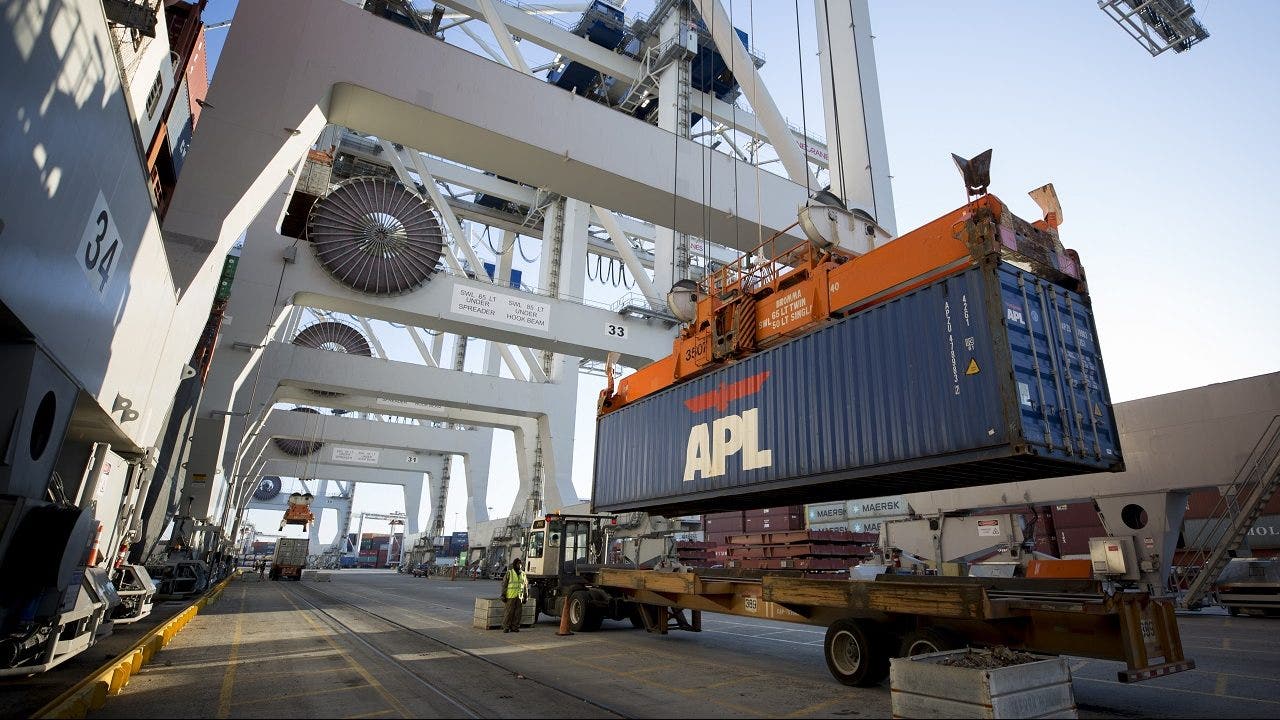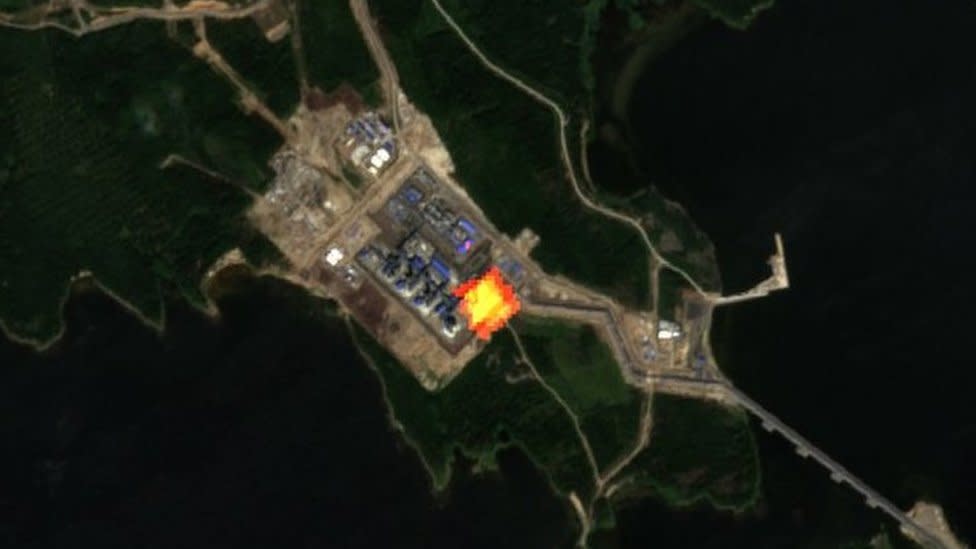Another asinine comment you have no clue about typical you looking to stir shit up150 degrees in the truck......sometimes.....why would you trash working people like that?
Navigation
Install the app
How to install the app on iOS
Follow along with the video below to see how to install our site as a web app on your home screen.
Note: This feature may not be available in some browsers.
More options
You are using an out of date browser. It may not display this or other websites correctly.
You should upgrade or use an alternative browser.
You should upgrade or use an alternative browser.
Whats going on in the World
- Thread starter cany
- Start date
Not quite that high lol if it did I would have you come by and try to fry eggs on the SS top lolGeneral G., has a tool box that reaches 132*..
movetheboat
Well-Known Angler
it was a question not a commentAnother asinine comment you have no clue about typical you looking to stir shit up
First part was a comment thats what I replied tooit was a question not a comment
movetheboat
Well-Known Angler
First part was a comment thats what I replied too
Livia Albeck-RipkaFirst part was a comment thats what I replied too
Sun, August 21, 2022 at 11:00 AM·8 min read

Matt Leichenger, a driver with UPS, delivers packages along his route in the Brooklyn neighborhood of New York on Tuesday, Aug. 16, 2022. (Johnny Milano/The New York Times)
About 8 p.m. on a hot Thursday in July, Nicholas Gubell, a driver for UPS, was nearing the end of his route on Long Island, New York, when he started to feel woozy.
That day, Gubell, 26, had delivered about 200 packages. Temperatures had soared into the high 80s, and it was even hotter inside the metal shell of the back of the truck, where, with each stop, he would spend up to a minute or so to retrieve his cargo, sweat beading on his skin.
Now, pulled over on the side of the road, he was panting and barely able to speak, gripping his phone with his hand, which had cramped from dehydration.
Sign up for The Morning newsletter from the New York Times
- A
“My body was losing it,” Gubell said. Paramedics covered him in ice packs to bring down his body temperature and took him to a hospital. “I was just trying to hold on as best I could.”
As blistering heat waves swept across the United States this summer, breaking temperature records and placing millions under heat advisories and warnings, workers such as Gubell have continued to deliver America’s packages for a variety of carriers, often in trucks that have no cooling mechanisms for drivers. Some UPS workers have shared photographs that show thermometer readings of up to 150 degrees in the backs of their trucks.
i await your apology
WAA WAA poor baby has to do his job spend a minute in the hot truck lolLivia Albeck-Ripka
Sun, August 21, 2022 at 11:00 AM·8 min read

Matt Leichenger, a driver with UPS, delivers packages along his route in the Brooklyn neighborhood of New York on Tuesday, Aug. 16, 2022. (Johnny Milano/The New York Times)
About 8 p.m. on a hot Thursday in July, Nicholas Gubell, a driver for UPS, was nearing the end of his route on Long Island, New York, when he started to feel woozy.
That day, Gubell, 26, had delivered about 200 packages. Temperatures had soared into the high 80s, and it was even hotter inside the metal shell of the back of the truck, where, with each stop, he would spend up to a minute or so to retrieve his cargo, sweat beading on his skin.
Now, pulled over on the side of the road, he was panting and barely able to speak, gripping his phone with his hand, which had cramped from dehydration.
Sign up for The Morning newsletter from the New York Times
- A
“My body was losing it,” Gubell said. Paramedics covered him in ice packs to bring down his body temperature and took him to a hospital. “I was just trying to hold on as best I could.”
As blistering heat waves swept across the United States this summer, breaking temperature records and placing millions under heat advisories and warnings, workers such as Gubell have continued to deliver America’s packages for a variety of carriers, often in trucks that have no cooling mechanisms for drivers. Some UPS workers have shared photographs that show thermometer readings of up to 150 degrees in the backs of their trucks.
i await your apology
movetheboat
Well-Known Angler
you couldn't do it
movetheboat
Well-Known Angler
1 Samuel 15:3 Now go, attack the Amalekites and totally destroy all that belongs to them. Do not spare them; put to death men and women, children and infants, cattle and sheep, camels and donkeys.’”
and we keep letting Christians in....even the damn donkeys,,,sheesh
and we keep letting Christians in....even the damn donkeys,,,sheesh
wader
Well-Known Angler

Is a Fetus a Person? An Anti-Abortion Strategy Says Yes.
Even as roughly half the states have moved to enact near-total bans on abortion since the Supreme Court overturned Roe v. Wade in June, anti-abortion activists are pushing for a long-held and more absolute goal: laws that grant fetuses the same legal rights and protections as any person...
So-called fetal personhood laws would make abortion murder, ruling out all or most of the exceptions for abortion allowed in states that already ban it.
WTF??!?
wader
Well-Known Angler

NM city, victim of government burn, now faces water shortage
In the foothills of the Rocky Mountains, buzzing chainsaws interrupt the serenity. Crews are hustling to remove charred trees and other debris that have been washing down the mountainsides in the wake of the largest wildfire in New Mexico's recorded history, choking rivers and streams. Workers...
NM city, victim of government burn, now faces water shortage
SUSAN MONTOYA BRYAN and BRITTANY PETERSONMon, August 22, 2022 at 5:10 AM·7 min read
LAS VEGAS, N.M. (AP) — In the foothills of the Rocky Mountains, buzzing chainsaws interrupt the serenity. Crews are hustling to remove charred trees and other debris that have been washing down the mountainsides in the wake of the largest wildfire in New Mexico's recorded history, choking rivers and streams.
Heavy equipment operators are moving boulders dislodged by the daily torrential summer rains that have followed the flames.
Workers have dug trenches and built barriers to help keep the flood of muddy, ash-laden runoff from causing more damage so it won't further contaminate the drinking water supply for the community of more than 10,000 that sits at the edge of the forest.
The clock is ticking for Las Vegas, a college town and economic hub for ranchers and farmers who have called this rural expanse of the Sangre de Cristo mountain range home for generations.
It has less than 30 days of drinking water left.
longcast
Well-Known Angler

Cooling housing market: Idaho, Colorado, Utah sellers drop prices in July
Sellers across every major U.S. metro have dropped their asking prices in July as more buyers backed out of the market in part because of high mortgage rates.
So-called fetal personhood laws would make abortion murder, ruling out all or most of the exceptions for abortion allowed in states that already ban it.
WTF??!?
I've seen some killers of pregnant women get hit with two counts of murder.
Last edited:
Rick67
Well-Known Angler
Bet they were all jabed. ?WAA WAA poor baby has to do his job spend a minute in the hot truck lol
wader
Well-Known Angler
Dry pastures force Texas ranchers to slaughter ever more cows
Evan GarciaWed, August 24, 2022 at 6:03 AM
By Evan Garcia
CROCKETT, Texas (Reuters) - With almost all of Texas in drought, ranchers are sending ever more cattle off to slaughter, a trend likely to increase beef prices over the long term due to dwindling supply from the largest cattle region in the United States.
Since mid-July, more than 93% of Texas has been in drought, according to the United States Drought Monitor. As of mid-August, more than 26% of Texas was at the highest level, characterized by widespread loss of pastures and crops as well as water shortages.
While conditions are especially acute in Texas, about 54% of all U.S. cattle were in some form of drought as of Aug. 16, up from 36% a year earlier. Cattle slaughter is high nationwide, temporarily increasing supply but portending tighter supplies in future years.
Paul Craycraft, co-owner of the East Texas Livestock Auction in Crockett, said dry pastures are depriving cattle of an important food source, while making it more expensive for ranchers to supplement their herds' diet with hay and feed.
"We've had I don't how many 100-degree (38 C) days and you can see out here, you know, the grass is gone," Craycraft said. "The cows are beginning to lose weight. The cows are weak because there's no protein. So we're getting rid of a lot of cows."
About 75% of the cows sold at auction the past two months have been sent to the slaughterhouse, Craycraft said, up from 30% to 40% in normal years.
Wesley Ratcliff, founder of Caney Creek Ranch in Oakwood, said he got an early start selling 50 of his 500 cows this year as the drought worsened.
"They were older mama cows and they might have gone and had another baby for us," Ratcliff said. "But rather than wait on them to have another baby, we went on to ship them to the meat factory."
Texas A&M University agricultural economist David Anderson said consumers can expect higher prices long-term due to what is happening in Texas, which according to the U.S. Department of Agriculture has more than 4.5 million beef cows, or 14% of the U.S. inventory.
"The pressure will be on for higher prices, higher cattle prices, higher beef prices over the next several years as the effects of this are felt," Anderson said. "We're going to face tighter supplies of beef. And tighter supplies of beef, with nothing else going on, means higher prices."
(Reporting by Evan Garcia in Crockett, Texas; Editing by Daniel Trotta, Donna Bryson and Matthew Lewis)
longcast
Well-Known Angler

GDP shrank at revised 0.6% rate in second quarter, signaling US remains in technical recession
The Commerce Department said in its second reading of second-quarter GDP data on Thursday that the economy shrank less than was initially reported in the spring.
wader
Well-Known Angler

Putin orders Russian military to beef up forces by 137,000
Russian President Vladimir Putin on Thursday ordered the Russian military to increase its number of soldiers by 137,000 to a total of 1.15 million servicemen amid Moscow’s military action in Ukraine. Putin’s decree, which takes effect on Jan. 1, didn’t specify whether the military will beef up...
wader
Well-Known Angler
Besieged Ukraine Nuclear Plant Cut Off From All Power for First Time, State Agency Warns
Residents living near the site of a Ukrainian nuclear power plant that has been taken over by Russian forces released a desperate video appeal Thursday as the plant—the largest in Europe—was “completely” disconnected from the power grid for the first time ever amid Russian hostilities.
Ukraine’s Energoatom, the state enterprise in charge of the plant, said fires around the plant allegedly set by Russian troops had cut off the final transmission line providing power, and “as a result, two operating units of the power plant were disconnected from the grid.”
“The actions of the invaders caused a complete disconnection… from the power grid for the first time in the history of the plant,” the agency warned, adding that one remaining backup line was still able to supply power to the plant.
Russia’s RIA Novosti, meanwhile, quoted Russian-backed authorities who said the nuclear power plant’s emergency systems kicked in and a “reconnection” was made.
The alarming announcement came after experts repeatedly warned in recent weeks that if cooling of the spent-fuel pool and reactors at the plant is interrupted, it could lead to a meltdown that would release radiation into the atmosphere.
“Start-up operations are underway to connect one of the power units to the network,” Energoatom said. The monitoring group NetBlocks said it had detected a “major disruption to communications” at the plant.
Just hours before the worrying news, residents of the city released a two-minute video pleading for help to stop a brewing disaster. The video, posted on YouTube and shared in Ukrainian media, showed a group of four people with covered faces begging for intervention against Russian troops.
“We, the residents of Enerhodar, appeal to you in total despair with a request for help. Today we, workers of the Zaporizhzhia Nuclear Power Plant, are hostage to Russian troops,” a man in the video said, warning that they “are threatening the whole world with a nuclear catastrophe” and “taking cover with us and our children.”
“The occupiers are carrying out genocide on the land of Enerhodar. We can’t go out on the street of our city, our children live in fear.… Our people are just snatched up off the street and taken in an unknown direction,” the man said, adding that those who’ve been taken simply vanished.
With regular shelling on the territory of the nuclear plant, he said, “we are fearing the worst results.”
The appeal is just the latest ominous warning to come out of the Zaporizhzhia region as authorities there say Russia continues to push the whole world to the brink of a Chernobyl-scale disaster by refusing to demilitarize the area around the nuclear plant in Enerhodar—the largest in Europe. While Russia has routinely accused Ukraine’s military of shelling the vicinity, Ukrainian defense officials say Vladimir Putin’s army is cynically using the plant as both a propaganda ploy and shield for its own attacks.
wader
Well-Known Angler

Climate change: Russia burns off gas as Europe's energy bills rocket
Russia is burning off millions of dollars in gas every day at a plant near the Finnish border.
Members online
Total: 745 (members: 14, guests: 731)
Latest articles
-
Abu Garcia's Beast SeriesAbu Garcia's Beast Series: Revolutionary Equipment for the Modern Swimbait Revolution October...
- george
- Updated:
- 6 min read
-
World's Lightest Spinning ReelGame-Changer or Gimmick? The Daiwa LUVIAS ST Claims to Be the World's Lightest Spinning Reel An...
- george
- Updated:
- 4 min read
-
New York Fluked Itself!Fluke Management in 2025: Regulators Got It Wrong Halfway through this season New York anglers...
- george
- Updated:
- 2 min read
-
Hunting Stripers and Blues from Rockaway Beach to Moriches InletThe Western Run: Hunting Stripers and Blues from Rockaway Beach to Moriches Inlet By: A Die-Hard...
- george
- Updated:
- 10 min read
-
Surf Fishing for Stripers - The East EndThe Eastern Edge: Mastering Montauk to North Fork Waters During the Fall Blitz By Captain Mike...
- george
- Updated:
- 10 min read
